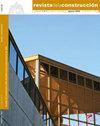接触爆炸作用下空心混凝土板爆炸响应的试验研究
IF 1.4
4区 工程技术
引用次数: 0
摘要
如何防止结构在爆炸荷载作用下的损伤是研究人员研究的热点问题。一般来说,人们对外表面的增强材料、增强设计以及利用各种材料生产的纤维进行了大量的研究。在本研究中,以具有规则强度的混凝土为材料制作空心板,并研究了接触爆炸时爆炸能量通过空心板释放并防止爆炸能量重定向到板下区域的设计。由于研究中的空心芯板没有任何横向钢筋,因此对混凝土抗拉强度的利用证明是有利的。为此,在本研究的实验测试中,在空心芯板上进行接触爆炸,每个芯的空心直径为14厘米。在爆炸试验前,通过TNT当量试验确定了910gr炸药的TNT当量。在预制空心混凝土板的爆炸试验中,分别采用125克、250克、375克和500克炸药作为爆炸材料。综上所述,计算了各层板所能承受的爆炸载荷,并根据炸药的用量确定了不同空心芯直径的各层板。本文章由计算机程序翻译,如有差异,请以英文原文为准。
An experimental study on the blast responses of hollow core concrete slabs to contact explosions
Measures taken against preventing damages in structures against explosive load are a popular matter of investigation among researchers. Generally, numerous studies were conducted on reinforcement materials for outer surfaces, reinforcement design, and utilizing fibers produced from various materials. In this study, a hollow-core slab was manufactured with concrete, which had a regular strength, and a design that discharged the explosive energy upon contact explosion via the hollow cores of the slabs and prevented the redirection of the explosive energy to the area below the slabs was investigated. Because the hollow-core slab in the study did not have any lateral reinforcement, the utilization of the tensile strength of the concrete proved advantageous. For this purpose, in the experimental tests of the study, contact explosions were conducted on hollow-core slabs with hollow diameters of 14 cm for each core. Before the explosion tests, the TNT equivalent of 910gr explosive was determined by performing the TNT equivalent tests. In the explosion tests of prepared hollow core concrete slabs, 125 gr, 250 gr, 375 gr, and 500 gr dynamites were used as the explosive materials. In conclusion, the explosive loads that the slabs could withstand were calculated and various slabs with distinctive hollow-core diameters were determined depending on the amount of the explosives.
求助全文
通过发布文献求助,成功后即可免费获取论文全文。
去求助
来源期刊

Revista de la Construccion
工程技术-工程:土木
CiteScore
2.30
自引率
21.40%
发文量
0
期刊介绍:
The Journal of Construction is aimed at professionals, constructors, academics, researchers, companies, architects, engineers, and anyone who wishes to expand and update their knowledge about construction. We therefore invite all researchers, academics, and professionals to send their contributions for assessment and possible publication in this journal. The publications are free of publication charges.
OBJECTIVES
The objectives of the Journal of Construction are:
1. To disseminate new knowledge in all areas related to construction (Building, Civil Works, Materials, Business, Education, etc.).
2. To provide professionals in the area with material for discussion to refresh and update their knowledge.
3. To disseminate new applied technologies in construction nationally and internationally.
4. To provide national and foreign academics with an internationally endorsed medium in which to share their knowledge and debate the topics raised.
 求助内容:
求助内容: 应助结果提醒方式:
应助结果提醒方式:


